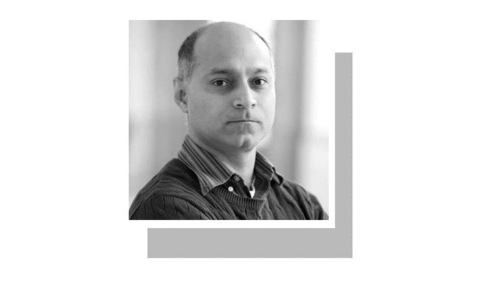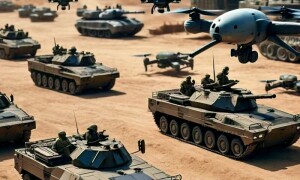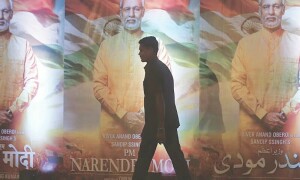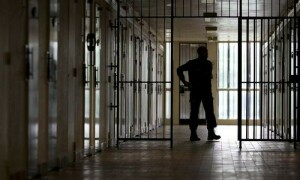CONTRARY to the parliamentary calendar of the legislature, the Punjab provincial assembly has been continuously in session for the last seven months. Although divided into three sessions — the 40th, 41st and 42nd — there was only a day’s gap between the sessions, practically making it one long session.
Apparently, this costly route of continuing the session and incurring the associated costs has been taken to avoid the governor’s exercise of his powers to ask the chief minister to seek a vote of confidence from the assembly where the CM has a razor-thin majority.
In a vote of confidence, the burden of proving the majority is on the CM and the absence — real or engineered — of even a few MPAs may fail the vote of confidence.
Although many legal experts believe that the governor can ask the CM to seek a fresh vote of confidence even while the provincial assembly is in session, the assembly is apparently made to stay in session continuously under the dubious impression that the governor can’t ask the CM to seek a vote of confidence during an assembly session.
This is just one example of how democracy is made to heavily pay for narrow party interests. Earlier, the same assembly had the dubious honour of holding two parallel budget sessions at two premises costing almost twice the amount for a session.
Democracy is a costly affair because the holding of periodic elections, maintaining elected bodies at the federal and provincial levels and elected local governments is quite a capital-intensive exercise but all these expenses are worthwhile.
If democratic institutions are elected and run in the true democratic spirit which calls for reasonable standards of integrity and efficiency, the democratic system is certainly a cost-effective proposition with a favourable cost-benefit ratio. But when democratic norms are abused and taken undue advantage of, the system starts to become unaffordable.
Irresponsible politics in the country are rendering democracy too costly.
Let’s take the case of our parliament and provincial assemblies. We have fixed a certain minimum number of days for these Houses to meet during a parliamentary year. The National Assembly, the Senate and the provincial assemblies are required to meet for a minimum of 130, 110 and 100 days respectively.
The Constitution allows that a gap of two days during the session of a legislature be counted towards the statutory minimum days of sittings. The actual number of sittings therefore are less than the days formally counted (as per the Constitution) — and so vividly demonstrated during the 41st session of the Punjab Assembly which met for just 35 days but accounted for 127 days.
Two other indicators point to the serious abuse of democratic norms. First, an average workday consists of merely three hours in most Pakistani legislatures which, by any standard, is rather low. The Indian Lok Sabha works an average of six hours per day and the British House of Commons around eight hours.
Second, on an average, the National Assembly hardly disposes of 40 per cent of its daily agenda or ‘order of the day’.
Lack of quorum is increasingly becoming the norm to adjourn the proceedings of the House. Noisy protests and brawls have also become more prevalent. The passing of the budget is a mere formality and hardly any scrutiny of the most important policy document ever takes place in the legislatures.
The allocated budget for the current year (2022-23) for the National Assembly, the Senate and the provincial assemblies of Punjab, Sindh, KP and Balochistan translates to a daily budget of Rs47 million, Rs34m, Rs37m, Rs29m, Rs18m and Rs23m respectively on the basis of the minimum statutory sitting days. This gives an idea of how much the loss of a day or the non-disposal of the agenda costs the taxpayers.
General and by-elections cost around Rs80m to Rs90m per National Assembly constituency. Despite incurring a huge cost, the 45pc average voter turnout for the last eight elections is among the lowest in the world in which the global average is around 66pc.
Our Constitution places no bar on the number of constituencies where a candidate chooses to contest elections from. Imran Khan, for example, won from five National Assembly constituencies during the 2018 general election and vacated all but one seat, which meant re-election in four constituencies with extra expenditure by the public exchequer.
There were others too who also vacated their seats. During the recent by-elections, Imran Khan won from six National Assembly constituencies, which means another series of by-elections on the five vacated constituencies.
Democracy allows people, political parties and interest groups to protest but the right to protest is subject to certain conditions such as not inconveniencing the public or obstructing businesses and public services like schooling.
Sadly, these restrictions are seldom respected and businesses and public services are adversely hit, costing millions, if not billions, in the process. Maintaining law and order during such protests and long marches costs the taxpayers quite heavily.
The federal government’s Economic Coordination Committee approved an initial sum of Rs410m to deal with Imran Khan’s Haqeeqi Azadi March which originated from Lahore and terminated in Rawalpindi. The expenses (not disclosed so far) incurred by the Punjab government are in addition to these figures but may even surpass the federal expenses as almost the entire long march route was in the Punjab province.
This article does not plead that democracy is too expensive and should therefore be discontinued. It is more about pleading with the people, political parties and elected representatives to use their democratic liberties and rights more responsibly and to do their duties more efficiently.
Their present conduct is weakening the case for democracy in Pakistan. The absence of, on average, around 55pc voters and around 70pc of youth from the polling stations is a scathing indictment of the prevailing quality of democracy in Pakistan. Even if we make allowances for this state of affairs on account of military interference in the political process, as recently acknowledged by the previous army chief, the responsibility of politicians and the people remains paramount.
The writer is president of the Pakistan Institute of Legislative Development And Transparency.
president@pildat.org
Twitter @ABMPildat
Published in Dawn, December 3rd, 2022











































